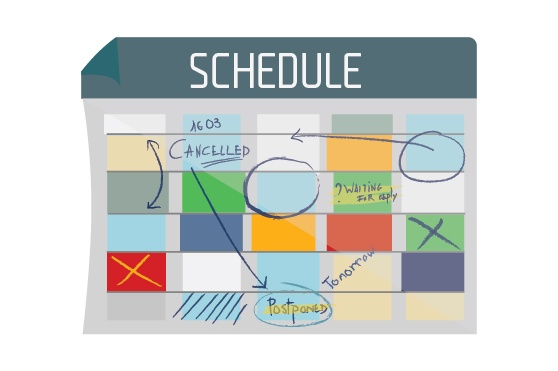Is your hospital’s receiving dock in pain?

A couple of years ago a commercial mover used our appointment scheduling application for a contract to move equipment and goods into a hospital. This customer opened our eyes to the challenges that hospitals face in managing their inbound traffic.
Since then we’ve brought on new hospital customers and spoken with several other hospitals, contractors and industry experts about the subject of scheduling deliveries into hospitals. No doubt, they all agree on the value of adopting technology to improve their business processes, including the efficient use of their receiving docks.
As we continue to develop our expertise in the area of dock scheduling (appointments, time slotting, bookings) across a broad spectrum of industries, we wanted to share with you the challenges that this industry faces and how they differ from traditional warehouse operations.
Fines and headaches caused by drivers waiting
- In downtown metropolitan areas, where traffic is already an issue and parking areas are rare, having trucks waiting on the street is a major concern.
- The hospitals’ suppliers have an established delivery run to respect and cannot afford to wait for an hour or so for a dock to free itself. As in other industries, hospitals are also susceptible to being charged detention fees (driver wait time fees).
Trucks monopolizing docks
- I’ve heard complaints from industry experts that ‘regulars’ such as food service providers can stay on the dock for 2 hours or longer some days. When trucks stay at the dock longer than expected, it can create a major backlog for the rest of the day. The appointment scheduling application may capture the expected arrival time, the actual arrival time and the departure time; thus providing management the data to forecast, monitor and force compliance on their supply chain partners.
- It has been recommended by an industry expert that the dock time usage could be part of certain supplier agreements; including linen, food service, and other staples. Through the monitoring of dock time usage, a supplementary charge could be applied to vendors who abuse their allocated dock time.
- Have the items arrived? When do you expect the shipment to arrive? Finding the answers to these questions is very time consuming for the receiving department. A web-based appointment scheduling application will provide internal customers visibility on when the appointment was taken, when it is expected to arrive, and much more.
- Hospitals often have staging areas, dedicated elevators and now AGVs (automated-guided-vehicles, in the newer buildings). These factors are scheduling constraints that must be respected, in addition to the number of dock doors available, in order to avoid periodic chaos on the docks.
- Load types, such as equipment, hazardous material and so forth also require planning. Receiving too many breakdown loads during a morning shift can seriously clutter the receiving area. Similarly, receiving several pieces of large equipment on the same day is not acceptable.
- The appointment application can automatically notify carriers and vendors via email and other means:
- Specific appointment change requests
- Global schedule changes
- Emergency closure of the hospital’s receiving area.
- In the case of emergency closure of the hospital, it is important to limit the traffic surrounding the facility. For this reason, having an efficient and fast means of communication with the vendors and carriers is truly important.
Time wasted due to incessant calls
- Have the items arrived? When do you expect the shipment to arrive? Finding the answers to these questions is very time consuming for the receiving department. A web-based dock scheduling system will provide internal customers visibility on when the appointment was taken, when it is expected to arrive, and much more.
Juggling with limited resources
- Hospitals often have staging areas, dedicated elevators and now AGVs (automated-guided-vehicles, in the newer buildings). These factors are scheduling constraints that must be respected, in addition to the number of dock doors available, in order to avoid periodic chaos on the docks.
- Load types, such as equipment, hazardous material and so forth also require planning. Receiving too many breakdown loads during a morning shift can seriously clutter the receiving area. Similarly, receiving several pieces of large equipment on the same day is not acceptable.
Inefficient means of communication
- The appointment application can automatically notify carriers and vendors via email and other means:
- Specific appointment change requests
- Global schedule changes
- Emergency closure of the hospital’s receiving area.
- In the case of emergency closure of the hospital, it is important to limit the traffic surrounding the facility. For this reason, having an efficient and fast means of communication with the vendors and carriers is truly important.
Therefore if the receiving process in your hospital is making you sick, look into a scheduling application which will help you plan, schedule, communicate and measure the inbound activity. For more information about dock scheduling, request a free live demonstration.

